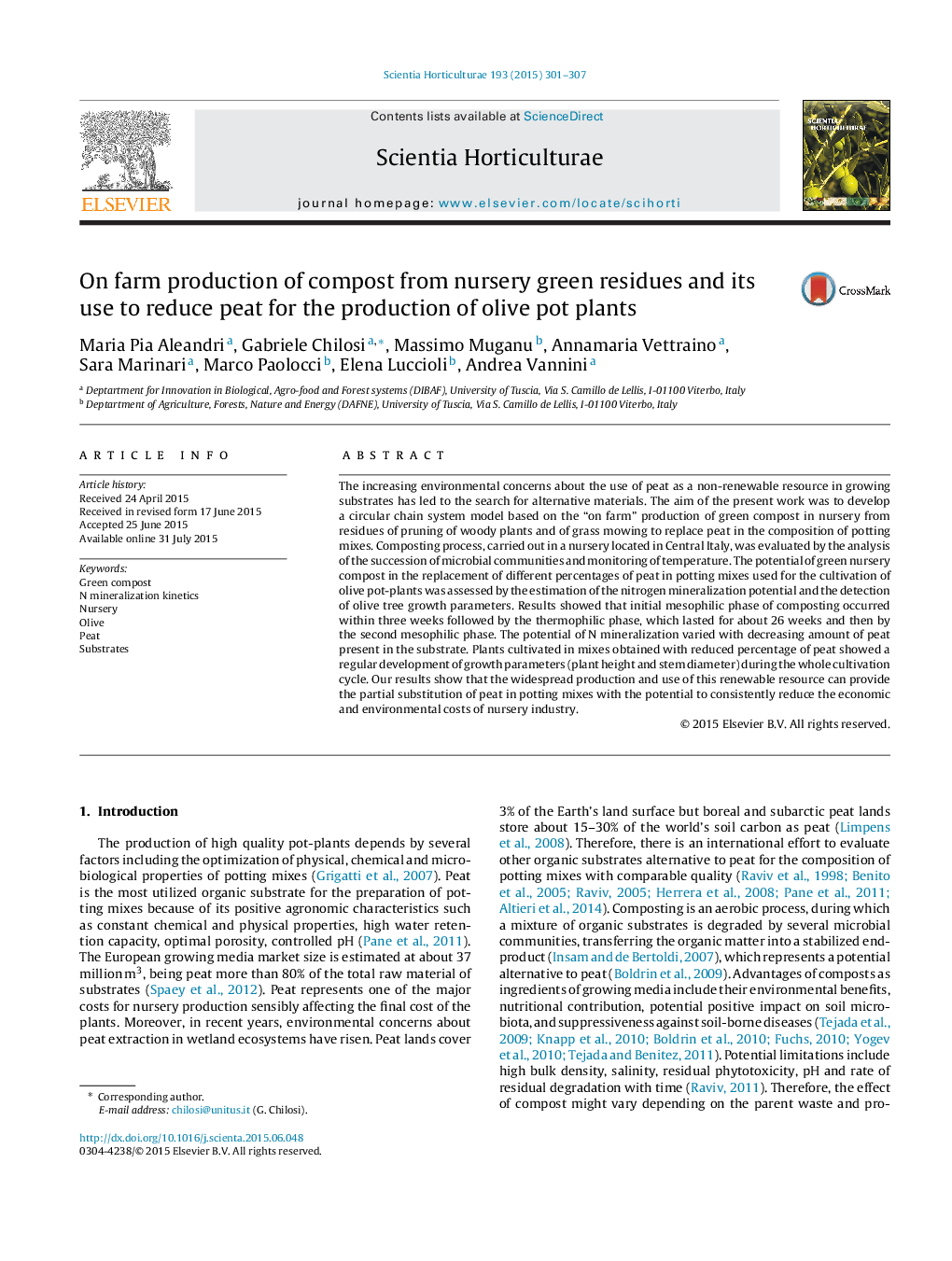| کد مقاله | کد نشریه | سال انتشار | مقاله انگلیسی | نسخه تمام متن |
|---|---|---|---|---|
| 4566210 | 1628805 | 2015 | 7 صفحه PDF | دانلود رایگان |
• “On farm” production of green compost in nursery from residues from internal activity was developed.
• Composting process was analyzed by the succession of microbial communities and temperature.
• Plants cultivated in mixes obtained with compost and reduced percentage of peat showed a regular development.
• The potential of N mineralization varied with decreasing amount of peat present in the substrate.
• The compost was found to be a suitable component of mixed-peat substrates for olive plants growth.
The increasing environmental concerns about the use of peat as a non-renewable resource in growing substrates has led to the search for alternative materials. The aim of the present work was to develop a circular chain system model based on the “on farm” production of green compost in nursery from residues of pruning of woody plants and of grass mowing to replace peat in the composition of potting mixes. Composting process, carried out in a nursery located in Central Italy, was evaluated by the analysis of the succession of microbial communities and monitoring of temperature. The potential of green nursery compost in the replacement of different percentages of peat in potting mixes used for the cultivation of olive pot-plants was assessed by the estimation of the nitrogen mineralization potential and the detection of olive tree growth parameters. Results showed that initial mesophilic phase of composting occurred within three weeks followed by the thermophilic phase, which lasted for about 26 weeks and then by the second mesophilic phase. The potential of N mineralization varied with decreasing amount of peat present in the substrate. Plants cultivated in mixes obtained with reduced percentage of peat showed a regular development of growth parameters (plant height and stem diameter) during the whole cultivation cycle. Our results show that the widespread production and use of this renewable resource can provide the partial substitution of peat in potting mixes with the potential to consistently reduce the economic and environmental costs of nursery industry.
Figure optionsDownload as PowerPoint slide
Journal: Scientia Horticulturae - Volume 193, 22 September 2015, Pages 301–307
